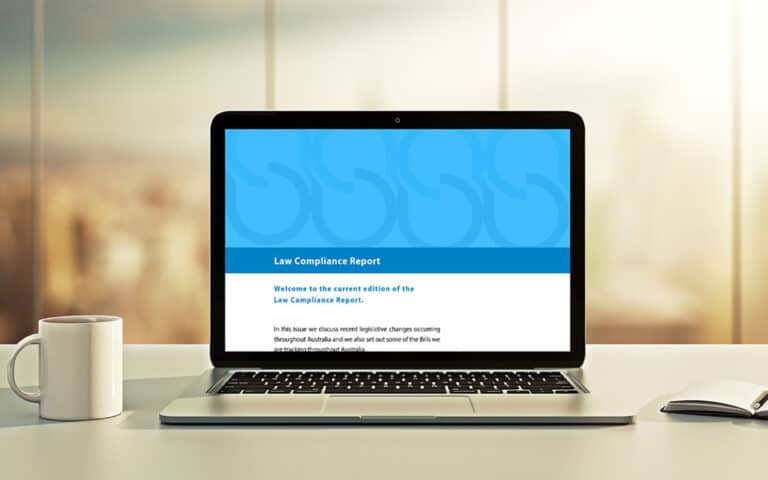This article applies to registered NDIS providers.
Disability Inclusion (Restrictive Practices – NDIS) Amendment Act 2021 No. 18 (SA); and the Disability Inclusion (Restrictive Practices – NDIS) Regulations 2021 (SA)
Please be advised that the Disability Inclusion (Restrictive Practices – NDIS) Amendment Act 2021 (SA) (the Amending Act) and the Disability Inclusion (Restrictive Practices – NDIS) Regulations 2021 (SA) (the Regulations) commenced on 30 May 2022. The Amending Act amended the Disability Inclusion Act 2018 (SA) (the Act).
The Amending Act and Regulations provide several new obligations that concern the use of restrictive practices; predominantly, these new obligations apply to prescribed NDIS providers.
Prohibited Restrictive Practices
The meaning of (regulated) restrictive practice is found in section 6 of the National Disability Insurance Scheme (Restrictive Practices and Behaviour Support) Rules 2018. Overall, it is a practice or intervention that has the effect of restricting the rights or freedom of movement of a person; including seclusion, chemical restraint, mechanical restraint, physical restraint and environment restraint.
There are certain types of restrictive practices that are prohibited whilst others may be used in certain circumstances.
The following types of restrictive practices are prohibited pursuant to section 23D of the Act and regulation 8 of the Regulations:
- prone restraint;
- supine restraint;
- any form of restraint intended to restrict or affect a person’s respiratory or digestive function;
- forcing the head of a person forward onto the person’s chest (other than that occurring incidentally in the course of using level 1 or 2 restrictive practices);
- any form of restrictive practice that involves or includes the deliberate infliction of pain or discomfort (including the hyperextension of joints, or the application of pressure to the chest, of a person) to secure compliance.
Principles concerning the use of restrictive practices
The Amending Act sets out general principles that organisations must observe as part of their consideration on the use of restrictive practices, i.e., those restricted practices that are not strictly prohibited.
The principles are now found in the Act under section 23G and are as follows:
- Restrictive practices should only be used by prescribed NDIS providers in limited circumstances, as a last resort, in the least restrictive way and for the shortest period possible in the circumstances;
- the use of restrictive practices is to be limited to circumstances in which prescribed persons cause, or may cause, harm to themselves or others;
- the use of restrictive practices in relation to a prescribed person must be done in a manner that:
- is, as far as is practicable, consistent with the prescribed person’s human rights; and
- safeguards the prescribed person and others from harm; and
- is proportionate to the potential negative consequence or risk of harm; and
- maximises the opportunity for positive outcomes and aims to reduce or eliminate the need for use of restrictive practices; and
- ensures transparency and accountability; and
- ensures, where relevant, that restrictive practices are used in relation to a prescribed person in a way that is consistent with a behaviour support plan for the prescribed person;
- the use of restrictive practices must not be used:
- as a punishment or for the convenience of others; or
- to address inadequate levels of staffing, equipment or facilities.
General provisions concerning the use of restrictive practices
According to section 23M of the Act, organisations that are prescribed NDIS providers may only use restrictive practices on a prescribed person if, in the opinion of that organisation, there is no other way to minimise the risk of harm, or to prevent further harm from being caused, that is reasonably available in the circumstances and when authorised.
The following persons are prescribed persons:
- an NDIS participant;
- a person who receives NDIS supports.
The following persons are prescribed NDIS providers:
- a registered NDIS provider who uses, or is reasonably likely to use, restrictive practices in the course of delivering NDIS supports to an NDIS participant;
- any other registered NDIS provider, or registered NDIS provider of a class, prescribed by the regulations for the purposes of this paragraph.
The use of level 1 restrictive practices
Under section 23N of the Act, an Authorised Program Officer may authorise an organisation, who is a prescribed NDIS provider, to use level 1 restrictive practices in relation to a prescribed person. If authorised, the organisation must comply with the restrictive practices guidelines if they use level 1 restrictive practices.
Level 1 restrictive practices, in relation to a prescribed person, may be authorised under this section if the Authorised Program Officer believes on reasonable grounds that:
- the prescribed person is displaying behaviour that constitutes a risk of harm; and
- the use of level 1 restrictive practices is necessary to minimise the risk of harm, or to prevent further harm from being caused; and
- the prescribed person has a behaviour support plan; and
- the behaviour support plan was prepared in consultation with the prescribed person; and
- the use of level 1 restrictive practices of the relevant kind is contemplated by, and consistent with, the prescribed person’s behaviour support plan.
The above authorisation must be in writing and set out several prescribed components.
A prescribed NDIS provider who uses level 1 restrictive practices in relation to a prescribed person pursuant to an authorisation under this section must cause a written notice in respect of the use of restrictive practices to be given to:
- In the case of a prescribed person who is a child, a parent or guardian of the prescribed person; or
- In the case of a prescribed person who has a guardian or substitute decision maker, the guardian or substitute decision maker (as the case requires) and the prescribed person; or
- In any other case, the prescribed person.
Further, without limiting any other provision of Part 4 of the Amending Act, or any other Act or law, a prescribed NDIS provider may, in relation to the use of level 1 restrictive practices in relation to a prescribed person, do 1 or more of the following:
- enter and remain in a place where the prescribed NDIS provider reasonably suspects the prescribed person may be found;
- search the prescribed person’s clothing or possessions and take possession of anything in the prescribed person’s possession that the prescribed person may use to cause harm to themself or others, or to damage property;
- retain anything so taken from the possession of the prescribed person for as long as is necessary for reasons of safety (and then return the thing to the prescribed person or otherwise deal with the thing according to law).
Level 1 restrictive practice means a restrictive practice (not being a restrictive practice consisting of or involving the detention of a person) as provided for in provision 4 of the Regulations, being:
- environmental restraints (other than environment restraints that are level 2 restrictive practices);
- mechanical restraints (other than mechanical restraints that are level 2 restrictive practices);
- chemical restraints (other than chemical restraints that are level 2 chemical practices).
Restrictive practices guidelines means the restrictive practices guidelines published by the Minister under section 23H of the Act.
Authorised Program Officer, in respect of a prescribed NDIS provider, means a person authorised as an Authorised Program Officer in respect of the prescribed NDIS provider under section 23L of the Act.
The use of level 1 or 2 restrictive practices
Under section 23O of the Act, the Senior Authorising Officer may authorise an organisation, as a prescribed NDIS provider, to use level 1 or 2 restrictive practices in relation to a specified prescribed person. If authorised, the organisation must comply with the restrictive practices guidelines.
A prescribed organisation who uses level 1 or 2 restrictive practices in relation to a prescribed person pursuant to an authorisation under this section must, in accordance with any requirements set out in the regulations, cause a written notice in respect of the use of restrictive practices to be given to the same persons under section 23N of the Act, as well as enter and remain in place, search the prescribed person or retain items from the possession of a prescribed person (as detailed above).
A Level 2 restrictive practice means a restrictive practice, or combination of restrictive practices, (not being a restrictive practice consisting of or involving the detention of a person) as provided for in provision 5 of the Regulations (e.g., seclusion, environmental restraint consisting of the use of electronic monitoring devices worn by a person, chemical restraint, etc).
Senior Authorising Officer means the person from time to time appointed as the Senior Authorising Officer under section 23I.
Conclusion
Organisations who are prescribed NDIS providers and who engage in or are likely to engage in restrictive practices should ensure relevant staff are made aware of the new obligations. To facilitate this, it is recommended that organisations provide their staff with access to the restrictive practice guidelines.
Furthermore, organisations should update their systems to achieve compliance with the various changes such as controls to prohibit certain types of restrictive practices, as discussed above.




